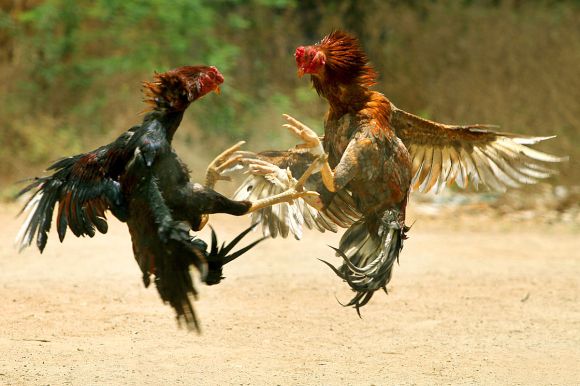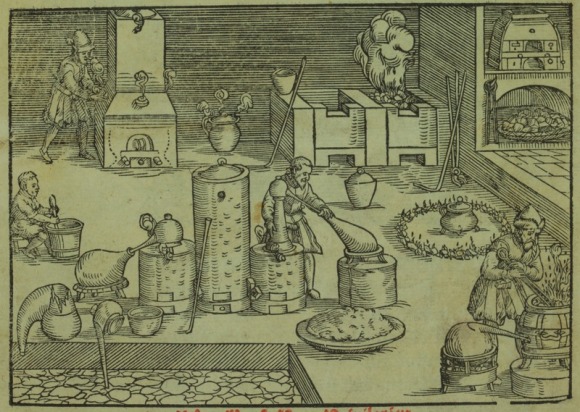Andrew Lawler, author of Why Did the Chicken Cross the World?: The Epic Saga of the Bird That Powers Civilization, suggests that the vicious sport “may be responsible for creating the bird that today is the world’s single most important source of protein”:
Pitting two roosters against one another may seem barbaric and arcane, but it may be why the bird became so ubiquitous. Biological evidence suggests that thousands of years ago in South Asia, its ancestral home, the chicken existed only in small numbers. In other words, chickens weren’t kept for producing meat and eggs; there weren’t enough of them for that purpose. They must have had a specialized use, and some scholars believe that use was cockfighting.
It may have begun, like bull fighting, as a religious ritual. A clan or village may have pitted its sacred rooster against another group’s bird. In northern Thailand, for example, the faun phi ceremony honoring ancestral spirits entails cockfighting of a religious nature that may reflect ancient practices. And in Indonesia’s Bali, few religious rituals take place without a cockfight that spills blood into the soil, satiating earth demons.
As the chicken spread, so did its use in ritual and gambling. One of the earliest recorded cockfights took place in China in 517 B.C. The match was held in Confucius’ home province of Lu during the philosopher’s lifetime. The earliest unequivocal evidence of cockfighting in the West comes from this same era. In a tomb just outside Jerusalem, excavators found a small seal that shows a rooster in a fighting stance. The seal was owned by Jaazaniah, who is called “the servant of the king.”
(Image of cockfight in Tamil Nadu, India, via Wikimedia Commons)












